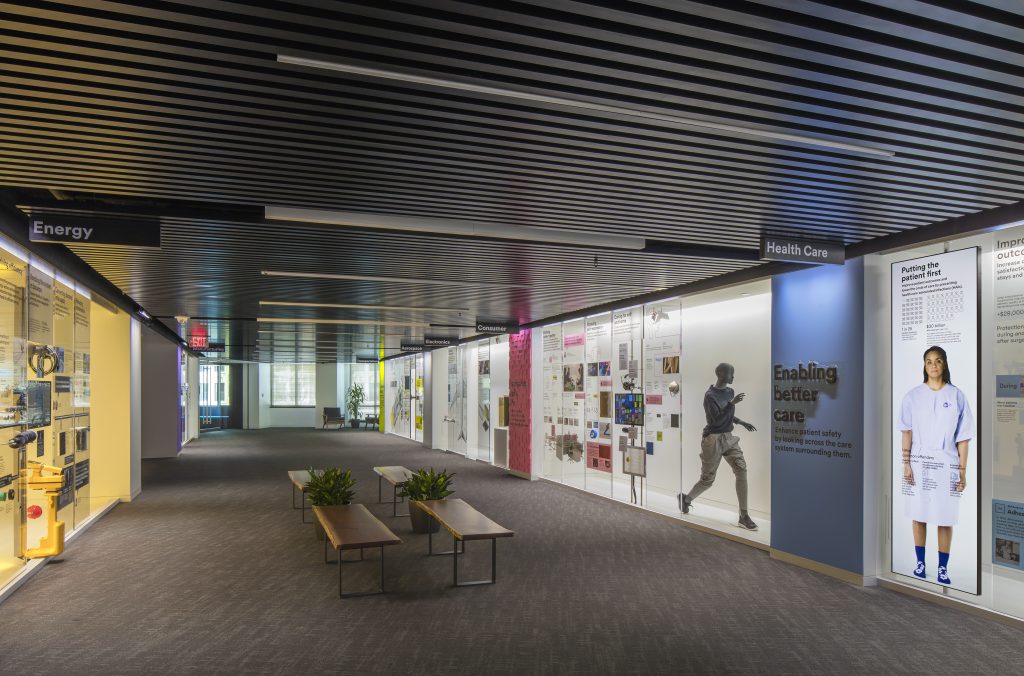“Markings of a Turning Point: Preserving the Last Surviving Example of Invasion Stripes on a World War II Bomber”
Karen Wilcox, Engen Conservation Fellow at the Smithsonian Air and Space Museum
3M Company located at 1425 K St NW, Washington, DC 20005
Attendance: (approximately) 50

At the Washington Conservation Guild’s March Intern Talks, Karen Wilcox, Conservation Fellow at the Smithsonian National Air and Space Museum, discussed her project on preserving probably the last surviving example of invasion stripes on a World War II bomber called Flak-Bait.
In her presentation, Wilcox spoke about the historical significance of the paint stripes and the methods of materials characterization that were used in preparation for the treatment.
The black and white stripes painted on Flak-Bait are a distinguishing characteristic of the World War II bomber at the National Air and Space Museum. These stripes aimed to prevent friendly fire between Allied forces during the D-Day invasion of Normandy. Flak-Bait was dismantled and shipped to the United States immediately following the war.
These invasion stripes are a unique record of the Allied invasion. The stripes are located on the bomber’s wings and fuselage and survived over 100 missions. Since the stripes were deemed no longer useful after the invasion, it is likely the paint material that was used was short lived. According to anecdotal historical records of the D-Day invasion, crews had to paint the stripes overnight to prepare for the mission. As a result, the stripes on Flak-Bait appear to have a sloppy application and overpainted corrections.
The camouflage paint was applied at manufacture without a primer and is currently flaking, which affects surface markings such as the stripes. The proposed treatment plan will include coating the exterior in Paraloid B-72 and the reattachment of the wings to the fuselage. The treatment will need to be reproducible on a large-scale and will emphasize durability since the wings on the bomber will be routinely cleaned once it goes on display.
Paint characterization played a key role in formulating the treatment approach. Wilcox identified a British source that indicated distemper (an umbrella term for water-borne paints based on calcium carbonate), and the British Ministry of Aircraft Production had a standard that vaguely described a quick drying powder or paste mixed with water for brushing and spraying. However, relying on this source does not take into account that British and American forces were under separate commands with separate supply chains and further analysis of the paint was required.
The analytical techniques Wilcox used for paint characterization included photomicrographs, X-ray Fluorescence (pXRF), Fourier-Transform Infrared spectroscopy (FT-IR), Raman spectroscopy, X-ray Diffraction (XRD), Liquid Chromatography-Mass Spectroscopy with proteomics (LC-MS) and chemical spot testing. Through these methods, Wilcox found that inorganic components dominated the results. Calcium carbonate was the major component in the paint which coincided with the account from the British Ministry of Aircraft Production. There were unaccounted peaks in the FT-IR and other elements found in XRF, such as lead. The possible explanation for the presence of these materials includes contamination from the engine fuel and surface cleaning with gasoline. Carbon blacks were identified with Raman spectroscopy – carbon blacks were common in military specifications during this time. Ultramarine blue was also identified which corresponded to the materials mentioned in several British accounts.
The next steps for Wilcox’s research will include reinforcing the information provided in these initial tests by identifying relevant archival sources and anecdotes. Moreover, methods to identify the binder of the paint will also be paramount in assessing the compatibility of the proposed treatment with the materials used for the invasion stripes. Initial experiments for binder identification are under way but with inconclusive results. Wilcox’s project ultimately considers how to adequately deal with this ambiguity in the results to decide the best approach to preserving these significant and unique markings.
Summarized by Tammy Ying Hong, Andrew W. Mellon Artist Materials Intern at the National Gallery of Art.